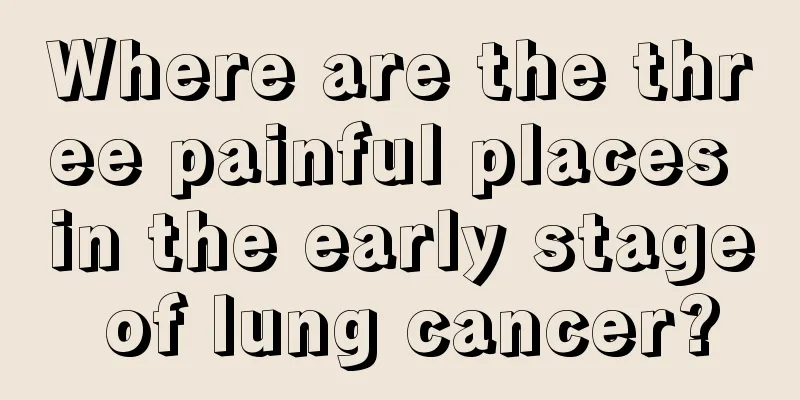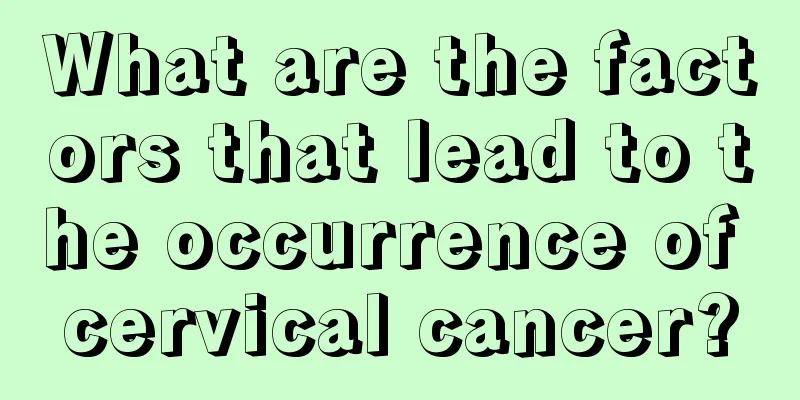Subacute thyroiditis

|
When it comes to subacute thyroiditis, I believe everyone is not clear what kind of disease it is. In fact, subacute thyroiditis is also a type of thyroid disease, and it is mainly caused by seasonal changes or viral infections. Generally speaking, it can be cured through certain treatments. So what are the symptoms and clinical manifestations of subacute thyroiditis? In fact, the main incidence group of subacute thyroiditis is middle-aged women between 40 and 50 years old, and with seasonal changes, especially in summer, the incidence group of this disease is increasing. So what is the treatment for subacute thyroiditis? Subacute thyroiditis Subacute thyroiditis, also known as viral thyroiditis, DeQuervain thyroiditis, granulomatous thyroiditis or giant cell thyroiditis, was first reported by DeQuervain in 1904. The incidence of this disease has gradually increased in recent years. The clinical changes are complex, misdiagnosis and missed diagnosis may occur, and it is easy to relapse, leading to a decline in health level, but most patients can recover. The disease may occur in different populations depending on the season or the epidemic of the virus. Cause: It has not been fully elucidated yet, but is generally believed to be related to viral infection. Evidence includes: patients often have a history of upper respiratory tract infection before the onset of the disease, the onset of the disease often varies with the seasons and has a certain epidemic nature. There are viral antibodies in the patient's blood (the titer of the antibody is consistent with the stage of the disease), the most common of which are Coxsackie virus antibodies, followed by adenovirus antibodies, influenza virus antibodies, mumps virus antibodies, etc. Although there have been reports of mumps virus being isolated from thyroid tissue of patients with subacute thyroiditis, conclusive evidence that the cause of subacute thyroiditis is a virus has not been found. In addition, subacute thyroiditis in Chinese and Japanese is associated with HLA-Bw35, suggesting that susceptibility to viral infection has a genetic factor, but there are also patients who are not associated with the above HLA-Bw35. Clinical manifestations More common in middle-aged women. The disease occurs seasonally, with summer being the peak season. Patients often have an upper respiratory tract infection at the onset of the disease. Typically, the entire disease period can be divided into three stages: early stage with hyperthyroidism, middle stage with hypothyroidism, and recovery stage. 1. Early stage: The onset is usually sudden, with fever, accompanied by fear of cold, chills, fatigue, weakness and loss of appetite. The most characteristic symptom is pain and tenderness in the thyroid area, which often radiates to the submandibular area, behind the ear, or neck. The pain worsens when chewing and swallowing. The range of thyroid lesions varies, and may start in one lobe and then expand or transfer to another lobe, or always be limited to one lobe. The affected glands are enlarged, hard, and painful. When the lesions are extensive, a large amount of thyroid hormone and non-hormonal iodinated protein in the follicles are temporarily released into the blood. Therefore, in addition to the general manifestations of infection, common manifestations of hyperthyroidism may also occur. 2. Middle stage: When the thyroid hormone in the thyroid acinus is depleted due to infection and destruction, and before the thyroid parenchymal cells are repaired, the serum thyroid hormone concentration may drop to the level of hypothyroidism, and may also turn into hypothyroidism clinically. 3. Recovery period: Symptoms gradually improve, goiter or nodules gradually disappear, and in many cases, small nodules remain which are slowly absorbed later. If treated promptly, most patients can recover completely, and only a few develop permanent hypothyroidism. In mild or atypical cases, the thyroid gland is only slightly enlarged, with mild pain and tenderness, no fever, and mild systemic symptoms. Clinically, there may not be any signs of hyperthyroidism or hypothyroidism. The course of this disease varies in length, from a few weeks to more than half a year, generally about 2 to 3 months, so it is called subacute thyroiditis. After the disease is relieved, it may relapse. Examination: For subacute thyroiditis, blood should be drawn to check erythrocyte sedimentation rate, blood routine, serum total T3, total T4, free T3, free T4, TSH, thyroglobulin antibodies (TRAb), thyroid peroxidase antibodies (TPO), thyroid B-ultrasound, thyroid iodine uptake rate examination and thyroid radionuclide scanning. The white blood cell count and neutrophil count are normal or slightly high, the erythrocyte sedimentation rate is increased, the serum protein-bound iodine or serum T3, T4, FT3 and FT4 concentrations are increased, the thyroid iodine uptake rate is decreased, and a thyroid scan shows an enlarged thyroid gland, but the image is uneven or incomplete, and sometimes not developed at all. Protein electrophoresis showed a decrease in albumin and an increase in globulins, mainly r and α1 globulins. 2. Diagnosis: If the patient has fever, thyroid enlargement with single or multiple nodules in a short period of time, and the nodules are hard and painful to touch, the disease can be preliminarily diagnosed clinically. Laboratory examination showed an elevated erythrocyte sedimentation rate in the early stage and normal or slightly elevated white blood cell count. Blood T3 and T4 increase, while blood TSH decreases, and the iodine uptake rate can be reduced to below 5% to 10%. This feature is of great significance for the diagnosis of this disease. Blood thyroid immunoglobulin also rises initially, and returns to normal later than thyroid hormone. Ultrasound examination is a better method for diagnosis and determining its activity stage. Ultrasound imaging often shows low-density lesions at the tender area. Aspiration or tissue biopsy can demonstrate the presence of megakaryocytes. treat There are a variety of treatments for subacute thyroiditis, including thioureas, thyroid-stimulating hormone, and suppressive doses of thyroid hormone. The evidence that these drugs affect the course of the disease is not conclusive. Treatment consists of two aspects: alleviating local symptoms and targeting the effects of abnormal thyroid function. Generally speaking, most patients only need symptomatic treatment. Treat mild cases with aspirin or other pain relievers. Symptoms can be controlled by using acetaminophen or salicylates. In severe cases, such as pain and fever, other non-steroidal anti-inflammatory drugs can be used for a short period of time, or glucocorticoids such as prednisone can be used to quickly relieve clinical manifestations. About 5% of patients need corticosteroids to relieve symptoms. Continuous medication for 1 to 2 weeks or even 4 to 8 weeks, then reduce the dosage for a total of 6 to 8 weeks. If the patient does not respond to prednisone within 24 to 48 hours, the diagnosis of subacute thyroiditis should be reassessed. During treatment, changes in erythrocyte sedimentation rate can be used to guide medication. If the condition requires, re-starting prednisone is still effective. However, corticosteroids do not affect the natural course of the disease. If the dosage of corticosteroids is withdrawn too much or too quickly, it will worsen the condition. It has also been suggested that if glucocorticoids are used continuously at doses that keep patients asymptomatic until their radioactive iodine uptake rate returns to normal, relapses may be avoided. Patients with hyperthyroidism are generally not treated with antithyroid drugs. Nonspecific drugs, such as the oral blocker propranolol, are usually used. Because hyperthyroidism associated with this disease is temporary and low iodine uptake by the thyroid gland is not an indication for radioactive iodine treatment. These drugs destroy the synthesis of thyroid hormones, but the excess thyroid hormones in the blood of subacute thyroiditis come from T4 and T3 leaking from destroyed follicles, rather than from increased synthesis and secretion, so there is no need to use thiourea antithyroid drugs. The hypothyroidism stage of this disease is often temporary, and there are usually not many symptoms of hypothyroidism, so thyroid hormone replacement therapy is not required. At this time, increased TSH secretion is important for the recovery of thyroid function. Unless the patient has significant symptoms of hypothyroidism, thyroid hormone treatment should be contraindicated. Patients with mild hypothyroidism do not need any treatment. However, some people also advocate that when hypothyroidism occurs, thyroid preparations such as L-thyroxine sodium can be used to prevent the condition from worsening again due to elevated TSH. For patients with more serious conditions, thyroid hormone can be used as a substitute for a period of time. About 10% of patients may develop permanent hypothyroidism and require long-term thyroid replacement therapy. It is said that traditional Chinese medicine has a good therapeutic effect on the acute stage of this disease. After reading the introduction to subacute thyroiditis, everyone has some understanding and knowledge about it. In the early stages of subacute thyroiditis, symptoms similar to fever, such as fever and loss of appetite, will appear, while in the middle stages, the thyroid hormone will be damaged and exhausted. In the recovery stage, the condition will gradually improve. Therefore, if you have symptoms suspected of this type of disease, you should seek medical attention in time, otherwise it will easily lead to worsening of the disease. |
<<: The infectious period of mumps
Recommend
How to lower blood pressure?
Now that people's living standards have impro...
Can I wash my hair after straightening it for 48 hours?
Hair straightening is a common part of hair care....
Two-step radiotherapy for nasopharyngeal carcinoma patients
Due to the special location of nasopharyngeal car...
How to define central lung cancer as advanced stage? Specific symptoms of advanced central lung cancer
Central lung cancer is a common tumor disease. Th...
What are the symptoms of advanced colon cancer
In my country, colon cancer is one of the maligna...
What to do if kidneys hurt from holding urine
According to normal human physiological habits, w...
8 types of people should try to avoid taking cold showers
1. People with high blood pressure As soon as the...
The chin is a little crooked and the mouth is a little crooked
In fact, if you look closely at your face in the ...
Which is better, a milk storage bag or a milk storage bottle
Many breastfeeding women want to suck out their m...
What are the functions of the right brain
The right brain is an important part of the brain...
What are the commonly used examination methods for ovarian tumors
In the early stage, ovarian cysts can be easily c...
It is the most unhygienic to use toilet paper at this time
Most toilet paper is recycled paper, and the raw ...
There are lymph follicles in the throat
Lymph follicle hyperplasia is a relatively common...
Treatment of secondary constipation
Many of us have experienced constipation, or in s...
What does it mean when there are dents on the nails
The growth of nails indicates the condition of th...









